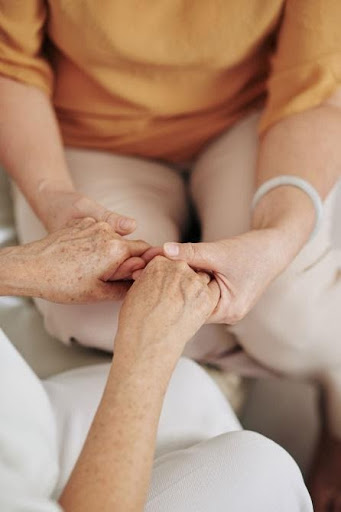It’s the little things you might notice at first. Bills piling up on Dad’s kitchen table. Mom’s excuses for not showering as often as she used to. The aunt you’ve been caring for begins to have continence issues. These missteps can be upsetting to witness, but they can also be helpful signs in determining when it’s time for assisted living for your loved one.
Family members regularly wrestle with the question, “Is my aging parent ready for assisted living?” A simple checklist devised in the 1960s by Dr. Sydney Katz is still used today to help provide the answer. Known as the Activities of Daily Living (ADLs), it gauges a senior’s capacity to remain independent by assessing their ability to complete 5 daily routines.
The list is also very useful for families, since it illuminates the signs that it’s time to think seriously about moving your loved one to assisted living. A companion list called Instrumental Activities of Daily Living (IADLs) was developed more recently. It can help families gain an even deeper understanding of the type of care that a senior might need.
ADLs include:
- Bathing
- Dressing (getting dressed and choosing clothing)
- Toileting (going to the bathroom)
- Transferring (the ability to get in and out of bed)
- Continence
- Eating
Instrumental ADLs include:
- Paying the bills
- Cleaning the house
- Cooking food for yourself
- Being able to transport yourself outside of the house
- Socializing
It’s helpful to regularly assess your loved one’s capabilities using both these checklists, and to keep your loved one’s physician apprised of any concerns. Above all, try to avoid becoming the “ADL police.” Instead, simply take notice of their actions in a caring, unobtrusive way. If issues come up only once in a while, there may be no need for action quite yet. But if you begin to notice repeated, worrisome behaviors or episodes of memory loss, those are good indicators that the answer to the question “when is it time for assisted living?” might just be “as soon as possible.”

Other Indicators That It’s Time for Assisted Living
Beyond noticing issues with ADLs, there may be other reasons to discuss with your loved one that it’s time to move to assisted living. These might include:
- Chronic Conditions ” With age, certain chronic medical conditions like heart disease or rheumatoid arthritis can worsen, forcing the need for more daily assistance. An aging parent is also more prone to falls ” private homes typically aren’t set up for fall safety.
- Money Troubles ” Not keeping up with bill paying and difficulty handling money can be early signs of dementia. A move to assisted living can relieve your loved one of those duties before they get into bad financial straits.
- Inability to Perform Housekeeping ” Keeping a house clean and in good condition is a challenge at any age, but it’s especially demanding for aging adults, especially those with medical conditions.
- Loneliness ” Living alone, especially if a person no longer drives or can’t manage public transportation, can be extremely isolating. Isolation can impact your loved one emotionally, mentally and even physically.

Timing Is Everything
It’s true that many seniors wait until they need medical care before moving somewhere that offers the care they need. But today, more and more older adults are making the move to a full-service senior living community while they’re still healthy and active. Friendship Village of Bloomington is such a place ” a community that offers vibrant independent living as well as multiple levels of on-site care, including assisted living, skilled nursing, rehab and memory care. They’re able to take advantage of activities and a busy social calendar in independent living, then, if needed, move to the community’s assisted living facilities or to the nursing home neighborhood to receive the aid of skilled nurses if and when needed..
For those seniors choosing to stay in their own home until they can no longer deny they need extra help, the responsibility for addressing when it’s time for assisted living rests on the shoulders of adult children.
Having the Talk About Assisted Living
Those who have been through the experience will always tell you to have the conversation about when it’s time for assisted living sooner than later. Kindness, sensitivity and patience are essential. It absolutely helps to use facts and examples, and this is where referring to the ADL lists can help. Your loved one may actually be aware of their own missteps, but they’ve chosen to ignore them.
Explaining that you have their safety and wellbeing in mind is important ” and reminding them that a move to an assisted living community is not about giving up independence, but rather gaining more of it. Having a little help with the basics of daily living relieves the person of embarrassment, pressure and worry. That leaves a lot more time to enjoy the fun things in life.
Also point out to your loved one the pleasure of having someone else prepare and serve them delicious meals. Mention they’ll have friends and activities just steps from their door. And wouldn’t it be nice not to worry about paying bills, doing laundry, grocery shopping or cleaning the house?

We Can Help Make the Transition Easier
Friendship Village of Bloomington has all the features and services you’re looking for as you consider assisted living communities for your loved one. Our residents in assisted living and independent living enjoy comfortable living options and a wealth of amenities and activities. And the option for advanced care is available if and when it’s needed. To learn more, simply fill out the contact form below and we’ll be in touch.



